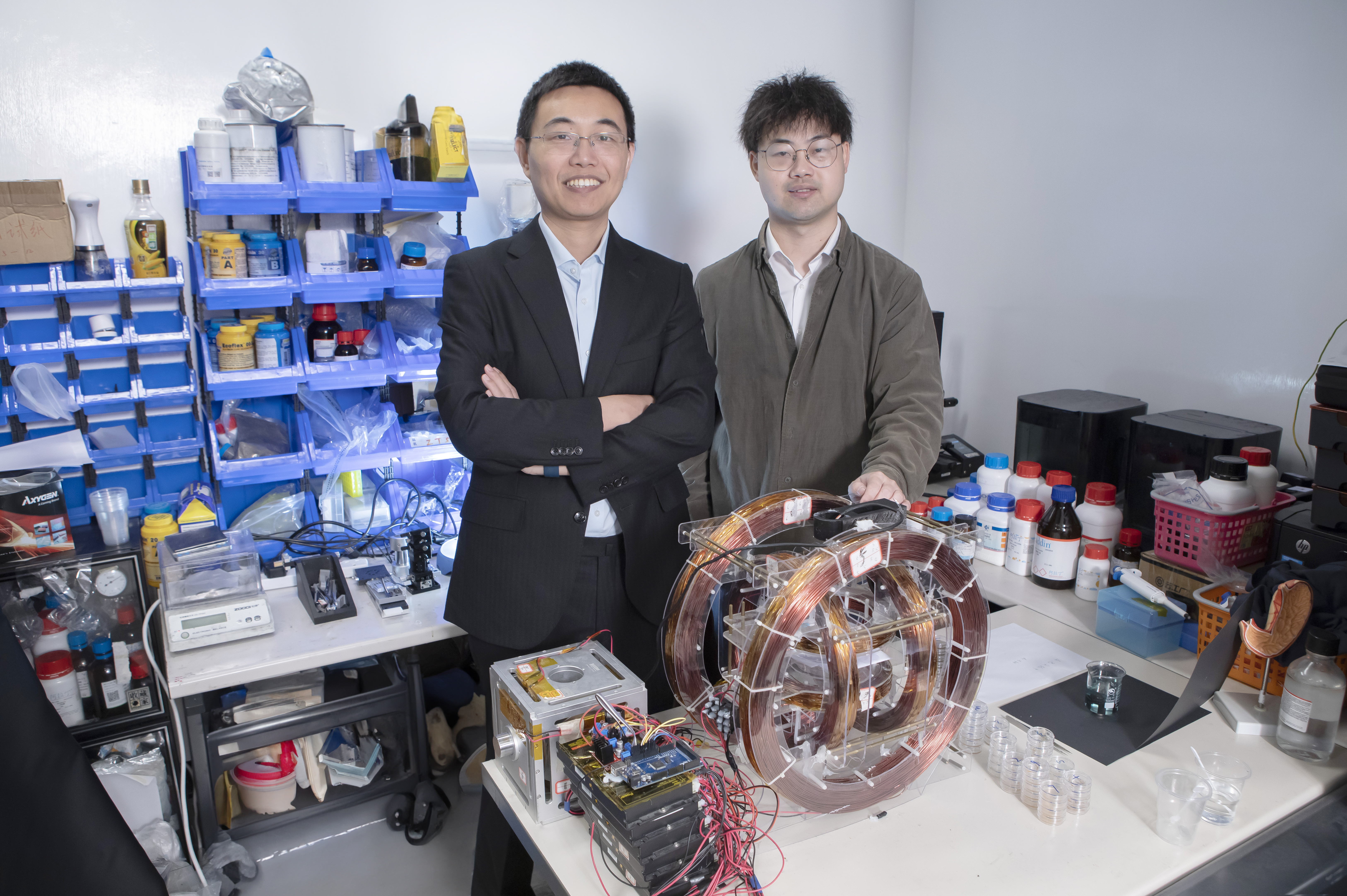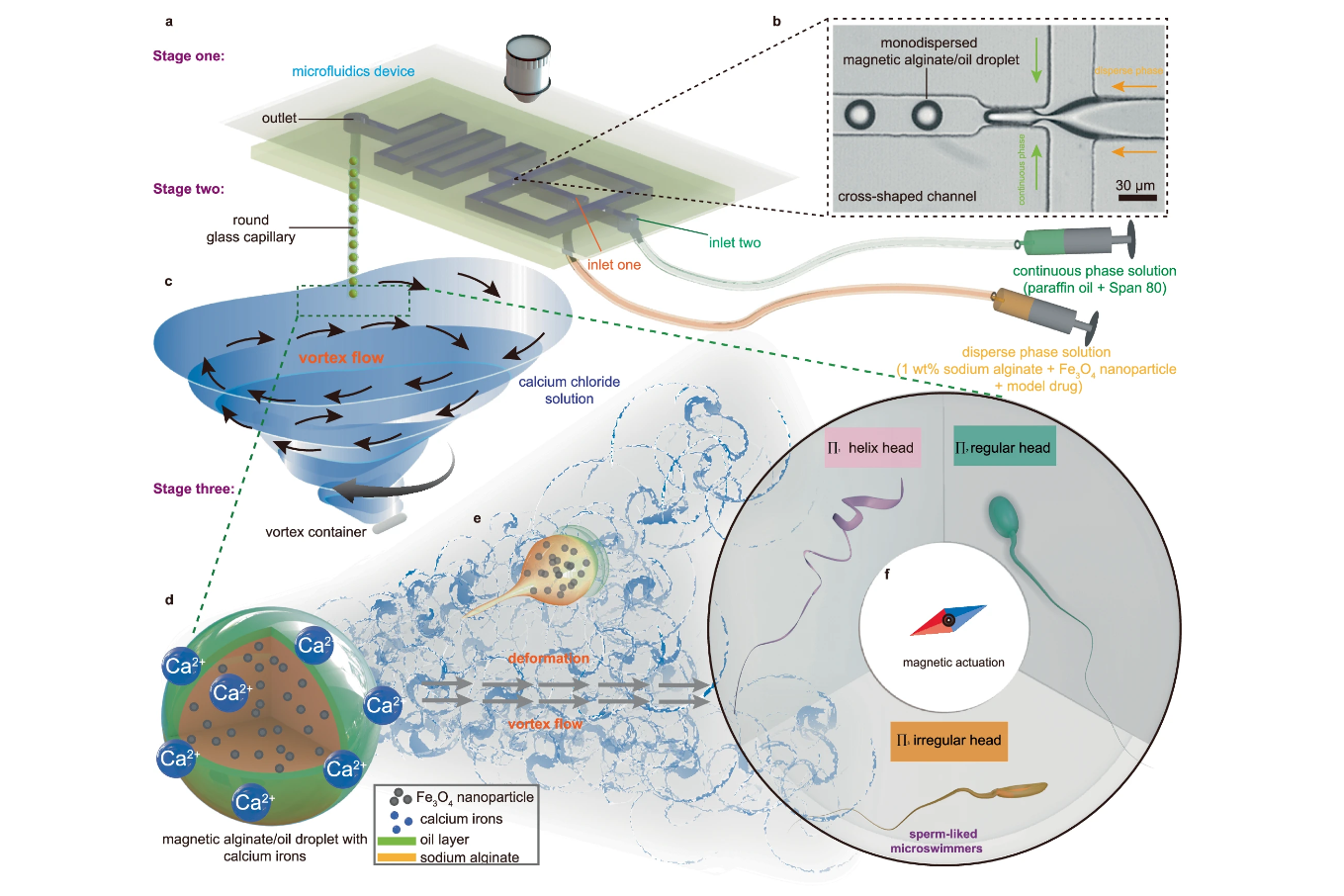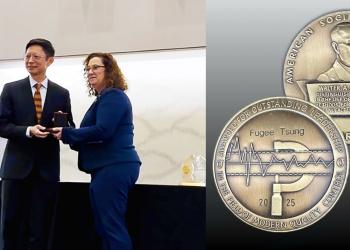HKUST Engineering Researchers Develop Groundbreaking Platform for One-Step Production of Sperm-Like Micro-Robots to Enhance Precise Drug Delivery
A research team from the School of Engineering of the Hong Kong University of Science and Technology (HKUST) has developed an innovative magnetic actuation platform that enables the one-step formation of sperm-like “micro-robots”, demonstrating excellent motility and efficient performance in precise drug delivery. By addressing the limitations of traditional microfluidic devices in processing sophisticated 3D structures, the research team has significantly streamlined the production procedure of these micro-robots, paving the way for more promising applications of this technology in the biomedical field.
Designed to navigate through complex environments for targeted drug delivery and minimally invasive surgery within the body, sperm-like “micro-robots” (also known as microswimmers) have been shown to offer higher swimming efficiency in liquid environments compared to conventional microfluidics. However, challenges remain in mass-producing these micro-robots and ensuring their efficient propulsion and controlled drug release.
Inspired by the motility mechanism of the sperm of ray, a type of sea fish, the research team led by Prof. SHEN Yajing, Associate Professor from the Department of Electronic and Computer Engineering, has proposed a one-step formation strategy for polymorphous sperm-like microswimmers based on a Vortex Turbulence-Assisted Microfluidics (VTAM) platform driven by an external magnetic field. Featuring a flexible tail for controllable propelling and a core-shell head for effective drug loading, these newly designed sperm-like microswimmers successfully achieve efficient propulsion in fluid environments of varying viscosities.
Prof. Shen said, “The VTAM platform provides a convenient and rapid strategy for manufacturing complex 3D polymorphous structures that traditional laminar devices cannot achieve. Striving for practical application, we aim to further optimize the process to ensure the consistency and performance stability of the microswimmers. We look forward to conducing in vivo testing to verify the performance of these micro-robots in clinical environments.”
The groundbreaking VTAM platform developed by the team combines a traditional cross-shaped microfluidic chip with a vortex container formed by a rotating magnetic stirrer. The microfluidic chip generates monodisperse magnetic alginate droplets, which are transferred via capillaries into a calcium chloride solution vortex container. The droplets burst under the action of the vortex flow, exposing the magnetic alginate solution inside and drawing it out along the direction of the vortex flow, forming an asymmetric sperm-like structure. After the tail is drawn out, the droplets solidify within milliseconds due to a crosslinking reaction with calcium ions in the calcium chloride solution. The microswimmers prepared through this strategy have biodegradable core-shell heads and flexible tails, with their morphology adjustable through the vortex speed and solution concentration.
To further enhance the drug delivery performance of these new microswimmers, the research team coated their surface with a pH-sensitive membrane, enabling slow and controlled drug release under different pH environments. This coating showed excellent performance under various environmental conditions, with significantly better drug release effects than those without the membrane. The team also introduced the microswimmers into a bio-mimicking environment and released drugs at specific locations, showcasing the tremendous potential of these microswimmers in biomedical applications.
“This research not only demonstrates the potential of bionic design in biomedical engineering, but also offers new direction for future drug delivery systems. With continuous technological advancements, it is believed that our new sperm-like micro-robots will make greater contributions to human health in the foreseeable future,” Prof. Shen added.
This research work was recently published in the top multidisciplinary journal Nature Communications, titled “One-Step Formation of Polymorphous Sperm-Like Microswimmers by Vortex Turbulence-Assisted Microfluidics”. Research Assistant Professor Dr. YANG Xiong and former postdoctoral fellow Dr. TAN Rong, both from the Department of Electronic and Computer Engineering, are co-first authors.











